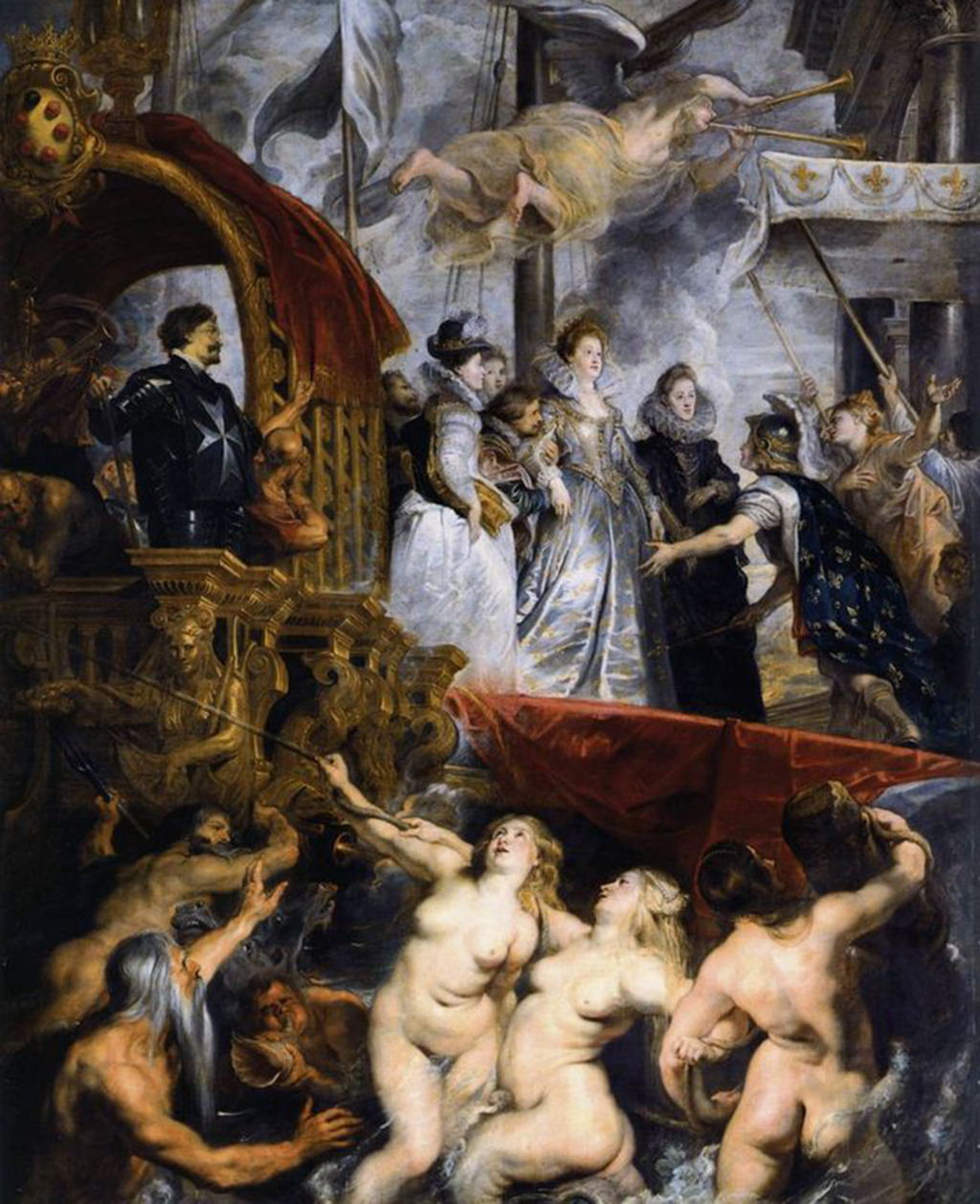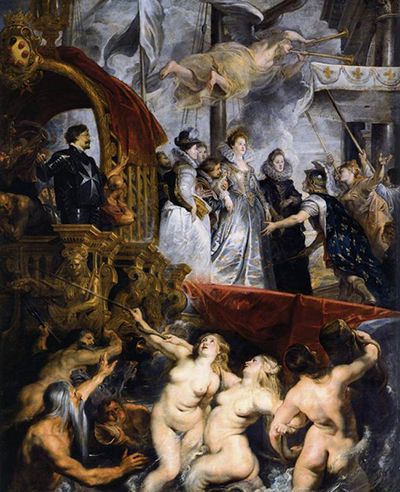The Disembarkation at Marseilles is also sometimes known as The Landing at Marseilles, 3rd November, 1600 and is a vibrant oil painting on canvas by Peter Paul Rubens
This painting is true to Peter Paul Rubens in every aspect, starting with the curvaceous women who strut around in the bottom of the painting to the general level of activity and large figures that are spread across the scene. It is particularly Baroque, but very much Rubens' style within that movement.
This exciting artwork takes the energy of the Baroque movement to the theatre, with a flurry of activity right across the scene. The layout is clearly structured to separate the different levels of importance within this piece, with the greater powers looking out over the rest. The poorer elements look desperate, reaching out to, seemingly, the ruling powers. The interiors of theatres have long since provided artists with stunning backdrops to their work, with ornate details to be found at every turn.
This beautiful oil painting is part of a series of twenty-four paintings by Peter Paul Rubens that can be found at the world-famous Louvre in Paris. The overall set of artworks in known as the Marie de' Medici Cycle and this particularly painting is the sixth iteration. As suggested in the name, the series was commissioned by Marie de' Medici, widow of Henry IV of France. The Medici family need no introduction to art followers, considering their involvement in Italian art. The final intended location for these paintings was the Luxembourg Palace in Paris but they are now to be found in the Louvre.





